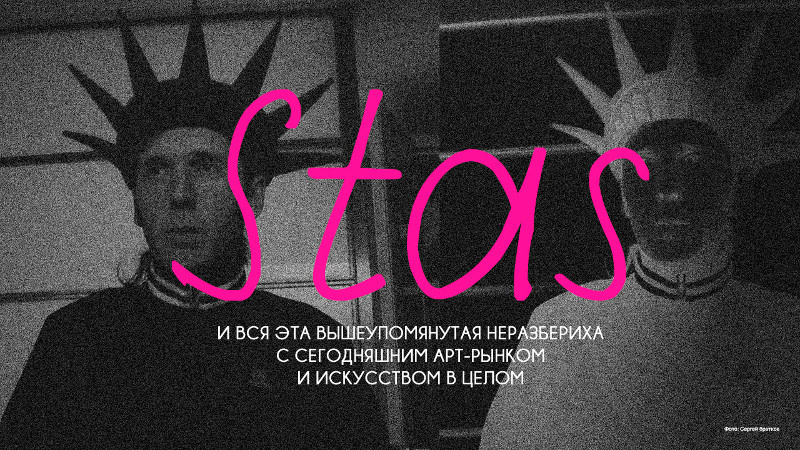Exhibition by Stas Voliazlovskyi (1971-2018)
01.11.2018 2023-11-20 17:42Exhibition by Stas Voliazlovskyi (1971-2018)

Stas Voliazlovskyi’s first posthumous exhibition in Ukraine, “STAS and all this aforementioned confusion with today’s art market and art in general”, will open at the Museum of Odesa Modern Art on 3 November at 18:00.
Stas Volyazlovsky (1971-2018) is one of the most distinctive artists in Ukrainian contemporary art. His work is an acute-social stereotype, provocative and often absurd. In his works, the artist mocked everyday kitsch and exposed public figures, clearly demonstrating what the country lives.
Voliazlovsky himself defined his style as “chanson-art” and worked in different media: he was involved in ceramics, graphics, photography, video-art, created collages and installations. In recent years Stas most often turned to textiles – he drew with a biro and tea on old sheets, calling these works “rags”.
Stas Volyazlovsky was a member of the R.E.P. group and the Totem video art club. He has exhibited in the UK, France, Belgium, Germany, Poland, Sweden, Lithuania, USA and Russia. Voliazlovsky has also worked closely with the legendary Dnepropetrovsk magazine “NASH”. In 2009, Voliazlovsky took part in the main programme of the Second Moscow Biennale, and a year later he received one of the most prestigious awards of contemporary art – the Kazimir Malevich Prize.
Since Wolazlowski was originally represented by Moscow’s Regina Gallery, many of his works are in Russian private collections, and yet, thanks to the initiative of ICIO, the joint efforts of Wolazlowski’s family and colleagues, the help of Ukrainian gallerists and Polish museum collections, the exhibition “STAS and all the above-mentioned confusion with today’s art market and art in general” was made possible.
“STAS and all the aforementioned confusion with today’s art market and art in general” is the first exhibition of Volyazlovsky’s work in Ukraine since the artist’s death earlier this year.
Voliazlovsky was born and lived in Kherson, absorbing and passing through the southern provincial culture. Voliazlovsky’s work is filled with provocative stereotype and social emancipation, a mixture of marginalised and media images. He showed the grotesque of everyday life, the kitsch of contemporary culture and the squalor of politics.
He defined his style as “Chanson-art”, but nevertheless he did not actually refer to “convict” paraphernalia, claiming that “prison art” is not close to him, as there is no freedom of creativity there, but only harsh tradition.
Volyazlovsky painted on old sheets and rags, made collages and stylised wall newspapers, installations and videos. The artist’s reference points were Art Brut, naive art and lubok, a type of folk art that became the basis for the author’s psychedelic “comic books”
Voliazlovsky was originally represented by the Moscow gallery Regina (where the artist’s first posthumous exhibition was organised) and many of his works are in Russian private collections, but thanks to the joint efforts of Voliazlovsky’s family and colleagues, the help of Ukrainian gallerists and Polish museum collections, the exhibition at ICIO was made possible.
It is an attempt to rethink the artist’s work by recounting the development of his creative practice and the institutional vicissitudes he faced.
INFORMATION ABOUT THE EXHIBITION AND CONTACTS:
The exhibition is curated by Alexandra Tryanova.
Opening: 3 November at 6 p.m. at the Museum of Odesa Modern Art (5 Belinskogo St.)
Free admission on the opening day.
The exhibition will last until 16 December.
